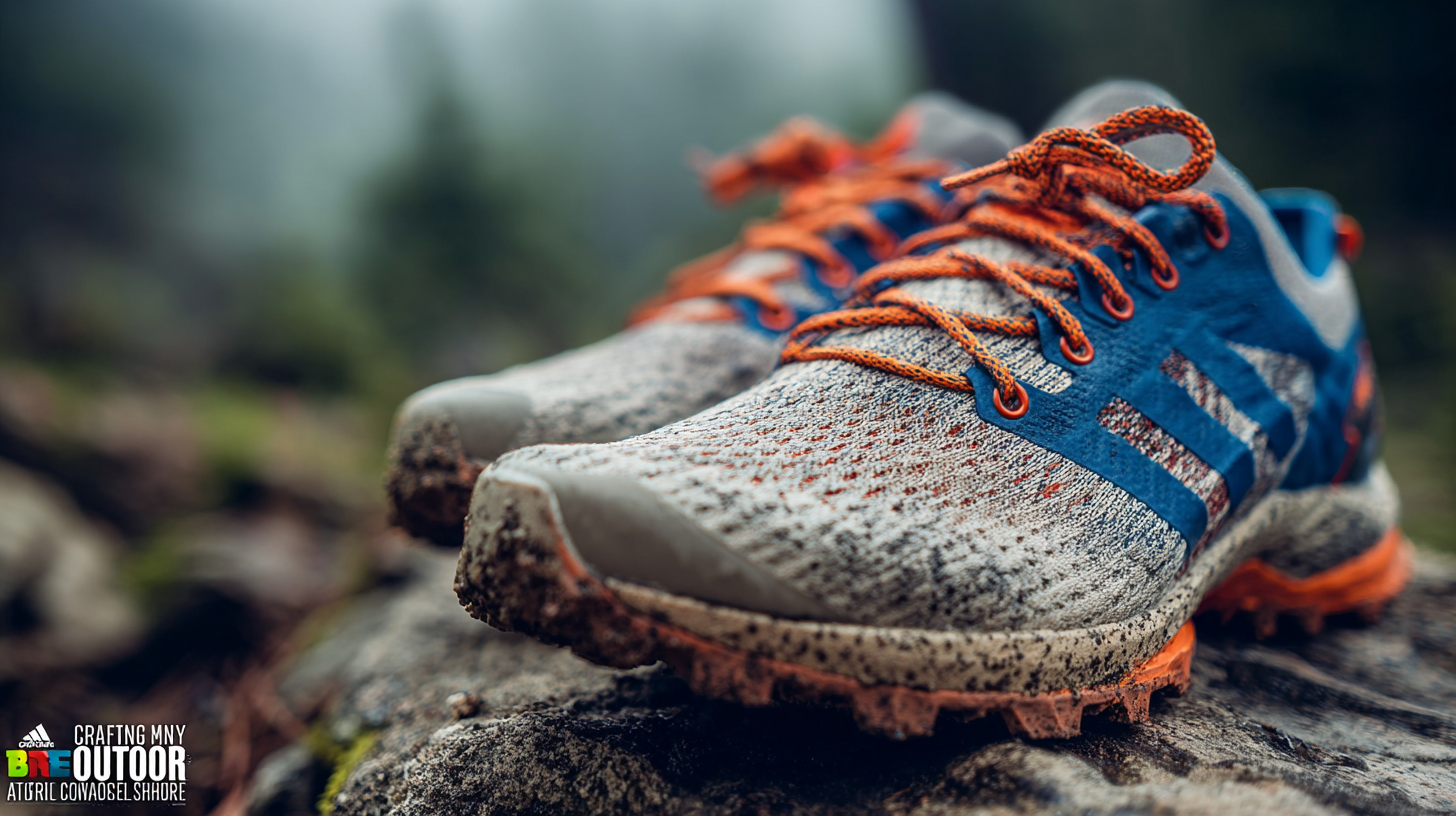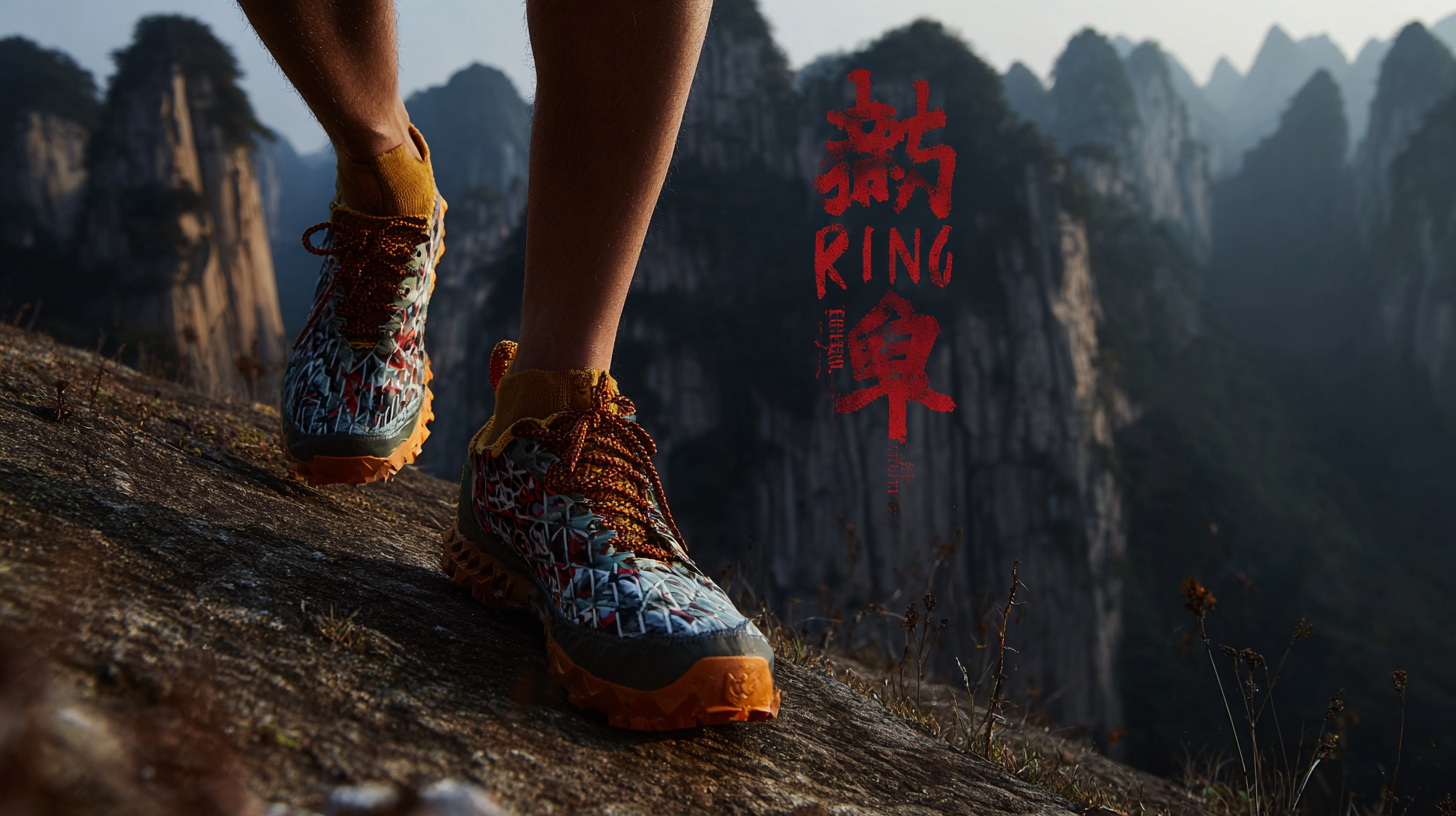
The global athletic footwear market is projected to reach a staggering USD 98.4 billion by 2025, highlighting the growing popularity of outdoor activities such as running. In particular, outdoor running shoes have become a staple for fitness enthusiasts around the world, driven by the increasing awareness of health and wellness. According to a report by Grand View Research, the demand for specialized footwear tailored for different terrains has surged, with outdoor running shoes witnessing significant growth due to their innovative designs and enhanced comfort.

As consumers increasingly seek quality craftsmanship and unique features in their footwear, Chinese manufacturers are stepping up to meet this demand, offering handmade options that combine traditional techniques with modern technology. This blog will explore how these premium outdoor running shoes are not only redefining performance but also fostering global respect for craftsmanship in the competitive athletic shoe market.
Creating high-quality handmade running shoes in China presents a unique set of challenges, particularly in adhering to global production standards. While the craft of hand-making footwear can result in outstanding products, the intricate processes involved often clash with the stringent requirements set by international markets. This discrepancy can arise from varying quality assurance measures, material sourcing practices, and labor regulations. Manufacturers must navigate these complexities to ensure their products not only meet but exceed expectations.
Additionally, maintaining consistency while handcrafting each pair poses a significant hurdle. Unlike mass production, the artisanal approach to making shoes introduces variability, which can be a concern for performance-oriented consumers. Striking a balance between traditional craftsmanship and modern industry standards requires a commitment to continuous improvement and innovation. By investing in training and adopting best practices in quality control, Chinese artisans can promote their exceptional skills while ensuring that their products resonate with a global audience seeking both performance and respect for sustainable craftsmanship.
When it comes to outdoor running shoes, cultural differences significantly influence consumer perceptions of product quality. According to a report by Statista, 62% of consumers in the Asia-Pacific region prioritize durability and craftsmanship, reflecting a cultural emphasis on quality performance. In contrast, Western markets often favor brand reputation and innovation. This divergence stems from differing cultural values, where Asian consumers may prefer products that showcase meticulous attention to detail, while Western counterparts might lean towards trendy designs and features.
Moreover, the alignment of product quality with cultural perspectives extends to consumer loyalty. A study published in the Journal of Consumer Research highlighted that consumers tend to develop a stronger emotional attachment to products that resonate with their cultural identity. For instance, a brand that emphasizes traditional craftsmanship in its outdoor running shoes may attract a loyal following in regions where heritage and artisanal skills are highly regarded. This cultural resonance not only enhances product acceptance but also bolsters a brand's reputation on the global stage, ultimately crafting a climate of respect and appreciation for handmade quality.

As the demand for outdoor running shoes surges globally, the environmental sustainability of their production has become a pressing issue. Chinese manufacturers are at the forefront of this market, producing a staggering volume of shoes each year. However, this mass production often raises concerns regarding the environmental impact associated with manufacturing processes. To evaluate the sustainability of Chinese outdoor running shoe production, it's essential to consider factors such as material sourcing, energy consumption, and waste management practices.

Many Chinese companies are now prioritizing eco-friendly materials, such as recycled plastics and organic cotton, to reduce their carbon footprint. Furthermore, advancements in production technology have allowed manufacturers to optimize energy use, minimizing reliance on fossil fuels. Additionally, initiatives aimed at reducing water usage during production and ensuring proper waste disposal have gained traction, showcasing a commitment to sustainability. By integrating these practices, the Chinese outdoor running shoe industry not only enhances its global reputation but also contributes positively to environmental conservation, paving the way for a more sustainable future in sports footwear.
The handmade shoe industry is at a crossroads where consumer expectations significantly differ from production capabilities. Today's consumers increasingly prioritize quality and durability over price, with 70% asserting that they seek long-lasting products. This shift in mindset requires manufacturers to innovate while maintaining the craftsmanship that distinguishes handmade footwear. As rising expectations call for enhanced performance, brands must invest in advanced materials and technologies to meet the demands of discerning athletes and outdoor enthusiasts.
Moreover, the growing trend towards personalization is reshaping the landscape of the handmade shoe market. Customization options not only reflect an individual’s unique style but also engage consumers in the design process. Companies that embrace this approach foster greater loyalty and connection with their customers.
To thrive in an environment where innovation, sustainability, and consumer-centric strategies reign supreme, brands in the handmade shoe industry must adapt quickly to align their production capabilities with the evolving desires of their audience.
Navigating the international market with Chinese handmade outdoor running shoes presents a unique set of challenges, particularly when it comes to compliance with various regulations and standards. As brands seek to expand their reach globally, understanding the nuances of international guidelines becomes paramount. Each region has specific requirements concerning product safety, labeling, and environmental impacts, which can vary significantly from one country to another. Ensuring that handmade running shoes comply with these diverse standards not only enhances product credibility but also fosters consumer trust.
Incorporating compliance into the design and manufacturing process is essential for avoiding costly setbacks. It starts with researching the specific regulations in target markets, such as materials used, manufacturing processes, and customs requirements. Collaborating with local experts can aid in seamless navigation through these complexities. Moreover, adapting practices to align with sustainable and ethical production standards not only enhances marketability but also aligns with the growing consumer demand for responsible craftsmanship. By prioritizing compliance, Chinese brands can effectively craft a global respect that highlights their dedication to quality and sustainability in the outdoor running shoe market.
| Country/Region | Market Regulation | Compliance Standard | Sustainability Index | Approval Status |
|---|---|---|---|---|
| United States | Consumer Product Safety Act | ASTM F2413 | 85% | Approved |
| European Union | REACH Regulation | EN ISO 20345 | 90% | Approved |
| Australia | Australian Competition and Consumer Act | AS/NZS 2210.3 | 80% | Approved |
| Japan | Product Safety of Consumer Products Act | JIS T 8101 | 75% | Approved |
| Canada | Consumer Product Safety Act | CAN/CSA-Z195 | 88% | Approved |
